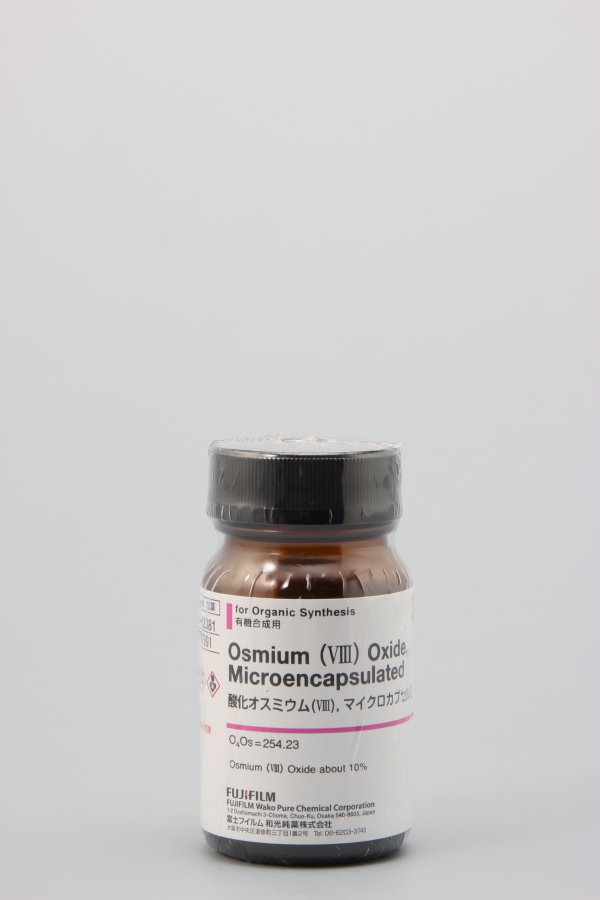Osmium(VIII) Oxide, Microencapsulated
|
Comparison
|
Product Number
|
Package Size
|
Price
|
Inventory
|
|
|---|---|---|---|---|---|
|
|
|
1G
|
|
In stock in Japan |
Document
Overview
Osmium oxide (VIII) is the most reliable reagent for the dihydroxylation of olefins to give the corresponding diols. Although a wide variety of processes have gained acceptance in this dihydroxylation, few fruitful industrial applications have been accomplished, probably because OsO4 is highly toxic, expensive, volatile, and cannot be recovered completely.
To overcome these problems, we have commercialized osmium oxide (VIII) microencapsulated compound with polystyrene using microencapsulation technology developed by Kobayashi et al. By using this microencapsulated OsO4 (MC OsO4) in the combination with a cooxidant such as NMO (N-methylmorpholine-N-oxide) etc., it is possible to use it repeatedly in catalytic amount. In addition, volatile properties are suppressed, so little irritating odor makes it much easier to handle.
Features
- Repeatedly reusable
- Easily separable from reactants
- Reduction of toxic and irritating odor by volatility suppression
- No OsO4 elution from polystyrene resin
- OsO4 content: ca 10%
Application
References
- Nagayama , S., Endo ,M., and Kobayashi , S.:J.Org.Chem.,63 (18), 6094 (1998).
- S. Kobayashi, M. Endo, S. Nagayama : J. Org. Chem., 63, 6094 (1998).
- S. Kobayashi, T. Ishida, R. Akiyama : Org. Lett., 3, 2649(2001).
Overview / Applications
| Outline | This product is for research use only. Do not administer it to human. [Features] Osmium(VIII) oxide is widely used for the dihydroxylation of olefins to give the corresponding diols, Appearance: Black mass Reference: Nagayama, S. et al., J. Org. Chem., |
|---|
Property
| Appearance | Gray - black, mass |
|---|---|
| Melting Point | 40 - 43 degrees C |
| Boiling Point | about 131 degrees C |
| Flash Point | 4 degrees C |
| Specific Gravity | 5.10 |
Manufacturer Information
Alias
For research use or further manufacturing use only. Not for use in diagnostic procedures.
Product content may differ from the actual image due to minor specification changes etc.
If the revision of product standards and packaging standards has been made, there is a case where the actual product specifications and images are different.






